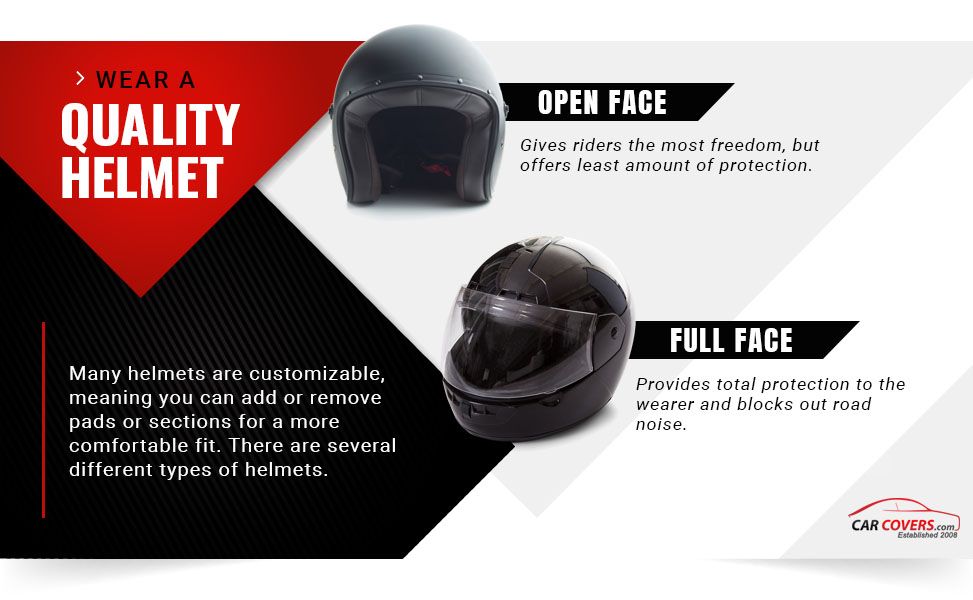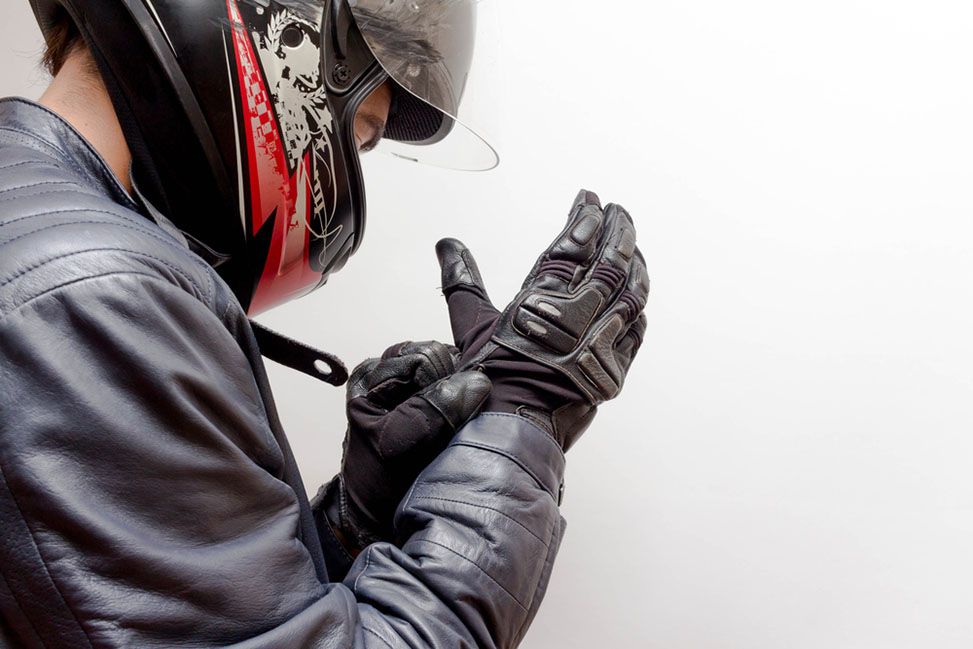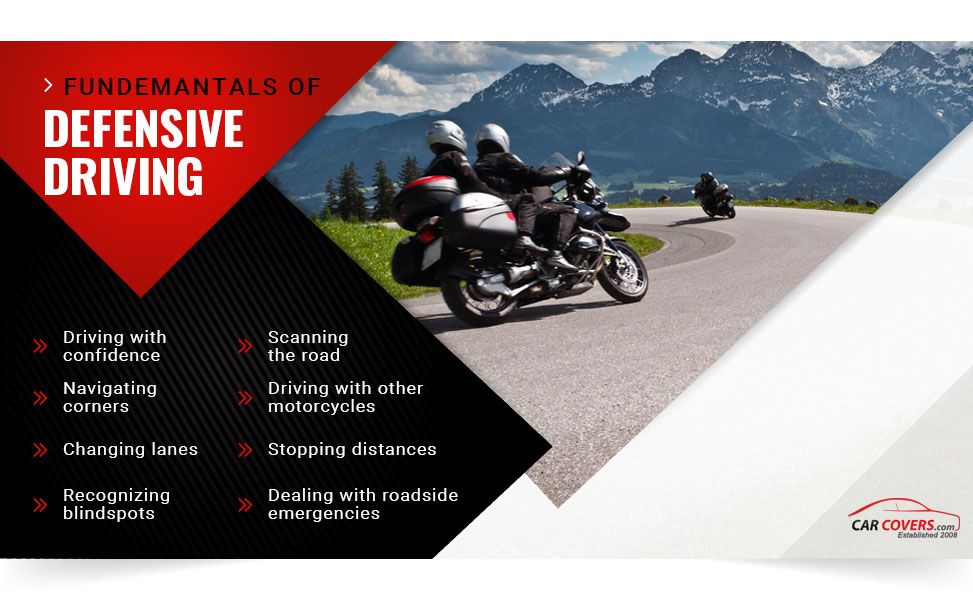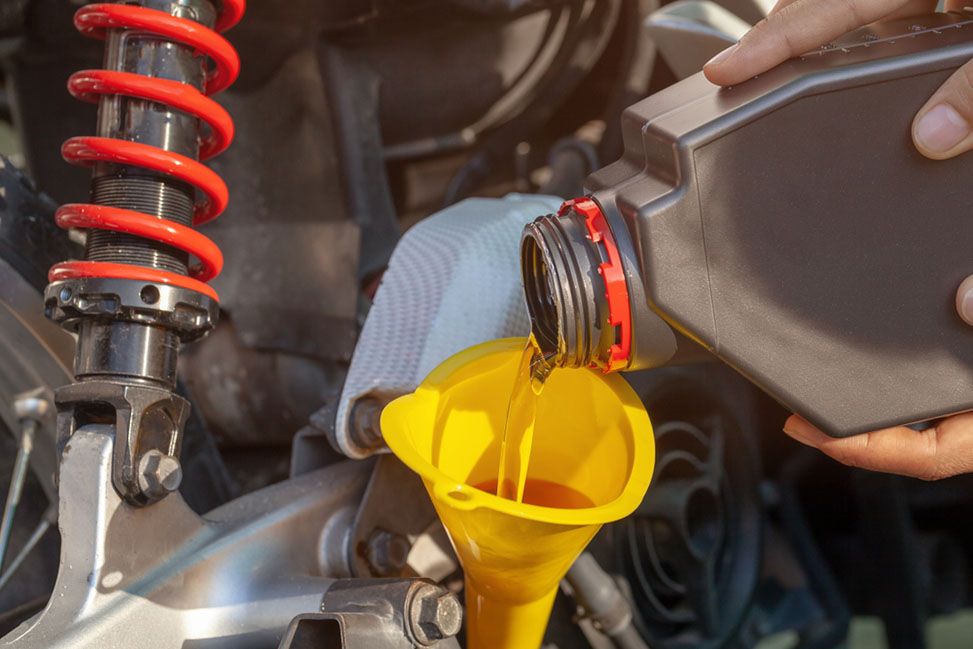
Summer Motorcycle Safety Tips & Advice
Motorcyclists cherish the summer months. Sunshine and fresh air are the perfect combination for a two-wheel road trip. Whether you’re new to riding or you’re a veteran, safety should always be a priority when riding a motorcycle. Motorcyclists are approximately 27 times more likely than car passengers to die in a crash. A safe approach to driving your bike doesn’t have to remove the fun. Implementing a few key motorcycle safety measures helps to not only protect you if an accident occurs but can prevent them from happening in the first place.
No matter your driving competency, you must always focus on road safety. Motorcycle safety is a year-round responsibility. However, with increased levels of traffic throughout summer, it’s essential to be extra vigilant. The following guide covers the most critical aspects of riding safely, protecting your motorcycle and tips on getting through the season without a scratch.
Invest in a Great Helmet
A helmet is the most critical safety item for motorcycle riders. For a safe summer on your bike, ensure that you wear a quality helmet on every journey. When it comes to purchasing a helmet, several factors should go into your decision. Foam helmet liners come in a variety of densities for improved protection. Although thickness plays a factor in impact protection, you don’t want your helmet to weigh you down. Look for a lightweight yet durable helmet made from polycarbonate, fiberglass, or kevlar.
As well as providing protection, a helmet should be comfortable. Determine the size and shape of your head and choose a helmet to suit. In general, the shape of someone’s head is either round oval, intermediate oval, or long oval, and different helmets are better suited to specific shapes. Many helmets are customizable, meaning you can add or remove pads or sections for a more comfortable fit. There are several different types of helmets.

• Open Face
An open face helmet gives riders the most freedom, but it also offers the least amount of protection. It only protects the top and side of your head, leaving your face exposed to wind and debris. Additional protection is generally needed to prevent sunburn, windburn, or pebbles and bugs from hitting your face as you drive.
• Full Face
A full-face helmet provides total protection to the wearer. It contains a face shield and chin-bar that cover the nose and eyes. Although an open face helmet gives you more ventilation, a full-face helmet provides more protection. This type of helmet also blocks out road noise, making your drive more pleasant.
For summer, it’s useful to have a helmet with a built-in sun visor. The visor is located inside the helmet and can be flipped down if it’s sunny. Visors protect your eyes and provide you with clearer vision throughout summer. In certain states, motorcycle drivers and passengers are required to wear a US Department of Transportation (DOT)-compliant helmet. These are tested and approved to meet safety standards.
Wear Motorcycle Gear
Wearing appropriate motorcycle gear is fundamental to rider safety. Due to the exposure and vulnerability that riders experience, the slightest mistake can lead to catastrophic injury. While a loose rock or small piece of debris is unlikely to affect a car, it can cause you to lose control of your bike. Although it can be tempting to dress light in summer, remember your clothing is a crucial protective layer. It protects you from debris, projectiles, the elements, and the road. You may not notice sunburn as you drive, but spending a few hours on your motorbike can lead to severe skin damage.
Apart from a helmet, the most crucial motorcycle gear for safety includes a jacket, pants, boots, and gloves. Quality motorcycle gear is abrasion-resistant and can stand up to wear. Ensure that your clothing fits well, as loose or poor-fitting clothes are distracting and can snag on passing objects, making them potentially dangerous. Good motorcycle jackets are generally made of leather or high-quality synthetic. Although leather jackets are usually more durable, a breathable synthetic fabric may be more comfortable for summer. Opt for a jacket with double seams and air vents for increased comfort, and make sure the body armor has a CE safety rating.

Unfortunately, regular pants or jeans don’t provide adequate protection if you’ve been involved in an accident. Motorcycle pants are made from similar materials to jackets. Quality pants are fitted with CE-rated armor on the hips and knees for additional fall protection. Riding boots aren’t just necessary for protection, but they are also important for practical reasons. Driving a bike can be physically taxing, so having strong footwear to support your feet and ankles can reduce wear and tear on joints over time. Oil-resistant and non-slip features are useful if you ride regularly.
If you happen to have an accident on your bike, your hands are the most likely point of contact with the ground. Unfortunately, hands are fragile and can be damaged severely in a crash. Motorcycle gloves protect your hands. Choose a pair made from leather or abrasion-resistant materials and ensure the fit is snug. Although many riders don’t like bulky armored gloves, some armor at the base of the palm is a crucial safety feature. A one-piece driving suit is great for convenience, but it often lacks comfort. However, it is a cost-effective way of improving driver safety.
Visibility Is Key
As a relatively small, fast-moving vehicle, a motorcycle can be challenging to see at times. A rider can easily occupy a car or truck driver’s blind spot, where an accident can happen in seconds. One of the most critical safety approaches for motorcycle drivers is visibility. While visibility is generally high in summer, riders must take the necessary precautions to ensure safety.

Wearing reflective clothing or installing reflective decals on your motorcycle makes you and the bike more visible to other drivers. Be vigilant of your position on the road and avoid spending time in drivers’ blindspots. Don’t drive too close to other vehicles and take caution when filtering through traffic. Some other ways of increasing visibility include:
- • Drive with your lights on, even during the day.
- • Use your turning signals to indicate where you’re going.
- • Engage your brakes when decelerating or stopping so your brake lights let other drivers know you’re slowing down.
- • Use the bike’s horn when necessary.
Defensive Driving
On a motorcycle, you must be alert at all times. While it is enjoyable to disconnect and relax while driving, it is vital to anticipate danger. Defensive driving is essentially a strategy that helps drivers to maneuver their vehicles more safely. Defensive driving teaches drivers to better their skill set by reducing risks, anticipating potentially dangerous scenarios, and making better decisions on the road. Defensive driving lessons help motorcycle riders to become safer and more confident drivers. As road laws differ from state to state, the exact skills taught in these courses vary. However, the fundamentals of defensive driving involve:
- • Driving with confidence and assertiveness but without aggressiveness.
- • Navigating corners and bends using the correct body positioning, counter-steering techniques, and judicious throttle application.
- • Changing lanes.
- • Recognizing blindspots and ways of avoiding them.
- • Driving with other motorcycles.
- • Scanning the road.
- • Vehicle stopping distances.
- • Environmental hazards.
- • Dealing with roadside emergencies.

Consider taking a defensive driving course to become a safer driver.
Plan Your Trips in Advance
By planning trips ahead of time, you give yourself the best chance of a safe journey. You can map out your route, familiarize yourself with the area, and give yourself enough time to get there safely. The weather has a significant effect on motorcycle driving conditions. Riders should always check the weather before a trip. Wind and rain are hazardous, as they can contribute to you losing control of the bike.
Riding conditions are most dangerous just after it starts to rain. The surface water causes oil residue from the road to rise to the surface, creating slippery conditions. Sudden movements, accelerations, and braking can cause the bike to slide. Keep an eye on the weather forecast and try to anticipate if it will rain so you can adjust your driving style. You should also be aware that hot weather can cause a road’s surface to become warped. Although warped roads are less common on highways and freeways, you may run into issues on local or secondary roads. When the sun is shining, this can affect the condition of the roads too.
Bike Maintenance
Maintaining your motorcycle is one of the most effective ways of staying safe this summer. Carrying out regular maintenance keeps your bike in excellent condition and improves its safety. For precise information on the best maintenance measures for your model of bike, consult the motorcycle manual. However, there are some general maintenance tasks to keep your bike in a safe condition. As a rule, you should change the motor oil in your bike once a year. If you drive frequently, you may need to replace it more often. Always choose high-quality motor oil if possible. Poor-quality oil breaks down quickly, meaning it needs to be changed more regularly. Make a habit of checking your oil levels before you take a trip.

The drive chain on your bike must be well looked after. It transfers power from the engine to the rear wheel, so a faulty chain may contribute to an accident. The best you can do for chain health is to keep it lubricated. Lube your chain as often as possible. It’s generally more beneficial to apply lubricant while the chain is warm, meaning post-drive lubrication is best. Monitor the condition of your tires and check the air pressure levels regularly. If you spot warping or signs of wear on the tread, don’t risk a blowout on the road. Change your tires when they are worn, to make driving safer.
Brakes tend to wear slowly over time, meaning you may not always notice a dip in performance. Regularly check the thickness of your brake pads and make sure to replace them before they wear down to the metal. The brake fluid is likely to need replacing every 1-2 years. Consult your motorcycle manual to confirm how often you need to change it. Clean the air and fuel filters and replace them if they become damaged or worn. Dirty filters put increased pressure on a bike’s engine. To keep the battery in good condition, charge it to 100% when the bike isn’t in use. A trickle charger is one of the best ways to charge your motorcycle battery.
Use a Motorcycle Cover
One of the best ways to keep your bike in a good, safe condition is to protect it with a motorcycle cover. Motorcycle storage is difficult year-round, but, with the risk of sun damage, bird dropping stains, acid rain, and other pollutants, it’s vital to protect your bike during summer.
At CarCovers.com, we stock high-quality motorcycle covers to keep your vehicle clean and protected. Whether you want to keep your bike out of direct sunlight while it’s parked in your driveway or protect it from bumps and scratches in your garage, our covers are the perfect solution.

Our Platinum Shield Covers provide excellent all-round protection for all weather conditions. The polyester exterior is extremely durable and reflects UV rays, while the soft fleece lining on the interior ensures that it won’t get scratched. It comes with a lifetime warranty, giving your motorcycle permanent protection. Whether you own a Harley-Davidson-style chopper or a city-cruising scooter, we stock a variety of styles and sizes, ensuring a snug fit and maximum protection. We provide custom-fit covers and even make covers for specific makes and models for the perfect fit and preventing the covers from coming loose or blowing away in adverse weather conditions.
When purchasing one of our quality covers, we recommend adding a gust strap wind protector to your shopping basket, giving you additional protection in high winds. This reinforces the fit of your cover. It’s essential to keep your bike clean, especially before applying the cover. Dust and debris can gather on the vehicle as you drive, causing damage to the exterior and engine when the bike is in storage. Our dusting kit makes this process convenient and easy. The kit consists of a 100% microfiber duster, two microfiber wash mitts, and six microfiber cloths, ensuring a comprehensive yet gentle cleaning process.
Shop Our Entire Selection of Motorcycle Covers
Stay Hydrated
Riding your motorcycle in summer is sweaty work. Without knowing it, you may be dehydrated while driving. This can make concentrating and focusing on the road more difficult. Ensure you consciously drink more water when driving during summer. If it’s very hot, consider taking an electrolyte drink on the road with you.
Avoid Taking Risks
Unfortunately, road traffic accidents are sometimes unavoidable. However, you can reduce your risk of danger by prioritizing safety. Avoid taking risks and ensure your head is on a swivel at all times. Keep your motorcycle in great condition by protecting it with a quality cover from CarCovers.com.
Updated